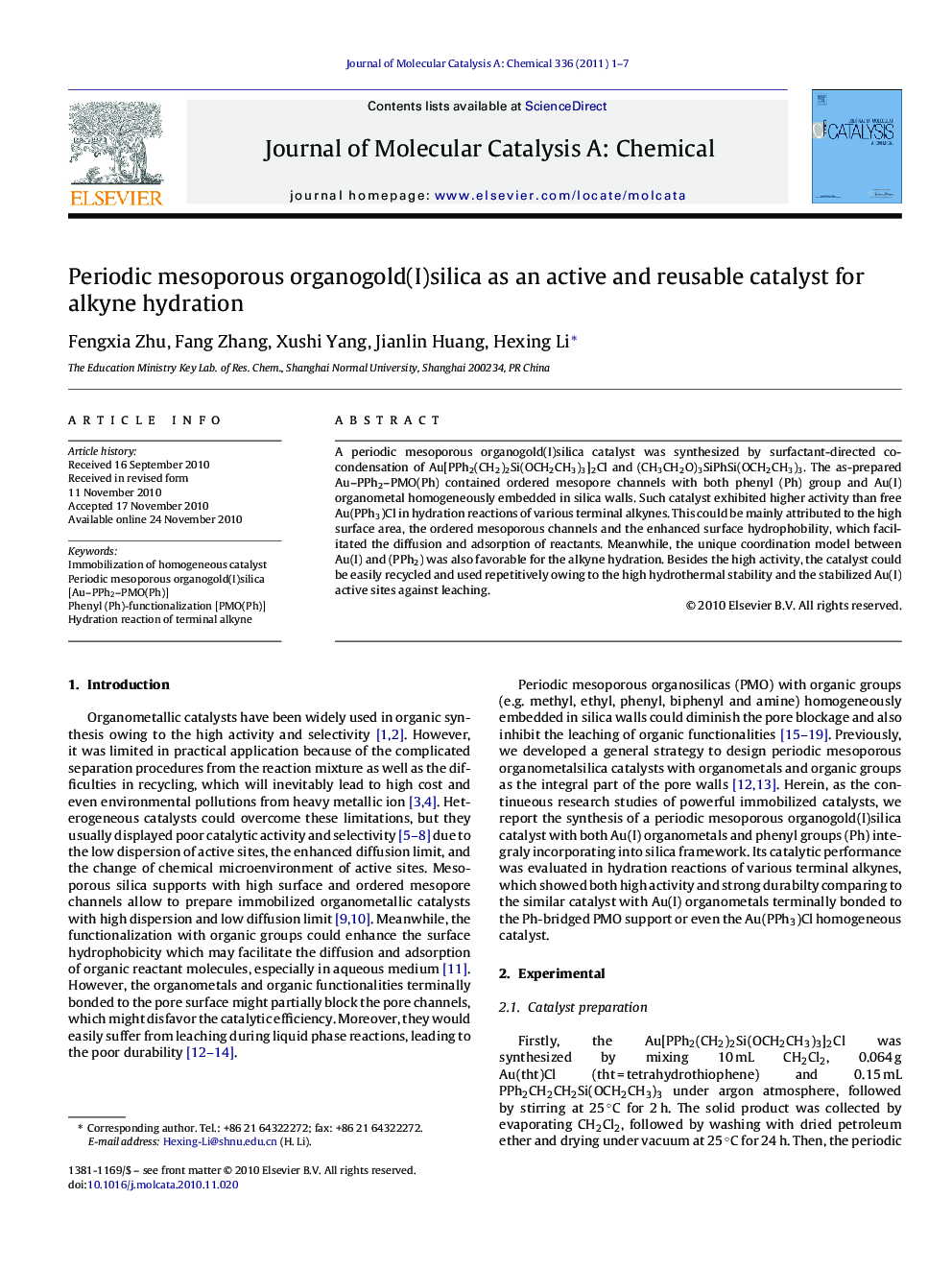| Article ID | Journal | Published Year | Pages | File Type |
|---|---|---|---|---|
| 66594 | Journal of Molecular Catalysis A: Chemical | 2011 | 7 Pages |
A periodic mesoporous organogold(I)silica catalyst was synthesized by surfactant-directed co-condensation of Au[PPh2(CH2)2Si(OCH2CH3)3]2Cl and (CH3CH2O)3SiPhSi(OCH2CH3)3. The as-prepared Au–PPh2–PMO(Ph) contained ordered mesopore channels with both phenyl (Ph) group and Au(I) organometal homogeneously embedded in silica walls. Such catalyst exhibited higher activity than free Au(PPh3)Cl in hydration reactions of various terminal alkynes. This could be mainly attributed to the high surface area, the ordered mesoporous channels and the enhanced surface hydrophobility, which facilitated the diffusion and adsorption of reactants. Meanwhile, the unique coordination model between Au(I) and (PPh2) was also favorable for the alkyne hydration. Besides the high activity, the catalyst could be easily recycled and used repetitively owing to the high hydrothermal stability and the stabilized Au(I) active sites against leaching.
Graphical abstractA periodic mesoporous organogold(I)silica catalyst with both the Au(I)–PPh2 organometal and the phenyl group embedded in silica walls was synthesized by Brij 76-directed co-polymerization, which exhibited higher activity than the Au(PPh3)Cl in alkyne hydration and could be used repetitively.Figure optionsDownload full-size imageDownload high-quality image (264 K)Download as PowerPoint slideResearch highlights▶ We developed a facile approach to prepare a new heterogenized organogold(I) catalyst. ▶ The catalyst displayed ordered mesoporous structure with high surface area. ▶ The catalyst contained both phenyl and organometal as integral parts of silica walls. ▶ The catalyst was active than free Au(PPh3)Cl in alkyne hydration and could be reused. ▶ Bicoordination model of Au(I) and high surface hydrophobility may enhance activity.
